Andhra Pradesh
Andhra Pradesh (/ˌɑːndrə prəˈdɛʃ/) ( pronunciation (help·info)) is one of the 29 states of India, situated on the southeastern coast of the country. The state is the eighth-largest state in India covering an area of 162,970 km2 (62,920 sq mi).[3] As per the2011 Census of India, the state is tenth-largest by population with 49,386,799 inhabitants. It is located east of Karnataka, south and east of Telangana, southwest of Odisha, south of Chhattisgarh and north of Tamilnadu. The largest cities are Vishakapatnamand Vijayawada.
pronunciation (help·info)) is one of the 29 states of India, situated on the southeastern coast of the country. The state is the eighth-largest state in India covering an area of 162,970 km2 (62,920 sq mi).[3] As per the2011 Census of India, the state is tenth-largest by population with 49,386,799 inhabitants. It is located east of Karnataka, south and east of Telangana, southwest of Odisha, south of Chhattisgarh and north of Tamilnadu. The largest cities are Vishakapatnamand Vijayawada.
On 2 June 2014, the north-western portion of Andhra Pradesh was separated to form a new state of Telangana. Andhra Pradesh's longtime capital, Hyderabad, was transferred to Telangana as part of the division. However, in accordance with the Andhra Pradesh Reorganisation Act, 2014, Hyderabad will remain the de jure capital of both Andhra Pradesh and Telangana states for a period of time not exceeding 10 years.[4] The new riverfront de facto capital, Amaravati, is under the jurisdiction of the Andhra Pradesh Capital Region Development Authority (APCRDA).[5] The Gross State Domestic Product (GSDP) of the state in the 2016–2017 financial year at current prices stood at ₹6,800.3 billion (US$110 billion).[6]
The state has a coastline of 974 km (605 mi) with jurisdiction over nearly 15,000 km2 territorial waters, the second longest coastline among the states of India after Gujarat.[3][7] It is bordered by Telangana in the north-west, Odisha in the north-east,Karnataka in the west, Tamil Nadu in the south and the water body of Bay of Bengal in the east. A small enclave of 30 km2(12 sq mi) of Yanam, a district of Puducherry, lies south of Kakinada in the Godavari delta on the east side of the state.[8]
Andhra Pradesh is composed of three major regions: Coastal Andhra, Uttarandhra and Rayalaseema, in the inland southwestern part of the state.[9] These three regions comprise 13 districts, with 3 in Uttarandhra, 6 in Coastal Andhra and 4 in Rayalaseema.Visakhapatnam, located on the Bay of Bengal in North Coastal Andhra is the largest city and commercial hub of the state with a GDP of $43.5 billion, followed in population and GDP by Vijayawada, which is located on the bank of Krishna River and which has a GDP of $3 billion as of 2010.[10][11]
Andhra Pradesh hosted 121.8 million visitors in 2015, a 30% growth in tourist arrivals over the previous year.[12] The Tirumala Venkateswara Temple in Tirupati is one of the world's most visited religious sites, with 18.25 million visitors per year.[13] Otherpilgrimage centers in Andhra Pradesh include the Srikalahasteeswara Temple at Srikalahasti, the Mallikarjuna Jyotirlinga at Srisailam, the Ameen Peer Dargah in Kadapa, the Mahachaitya at Amaravathi, and the Kanaka Durga Temple in Vijayawada,Prasanthi Nilayam in Puttaparthi while the state's natural attractions include the beaches of Visakhapatnam, hill stations such as the Araku Valley and Horsley Hills, and the island of Konaseema in the Godavari River delta.
Contents
[hide]History[edit]
Toponomy[edit]
A tribe named Andhra was mentioned in Sanskrit texts such as Aitareya Brahmana (800-500 BCE). According to Aitareya Brahmana of the Rig Veda, the Andhras left north India and settled in south India.[14][15][16] The Satavahanas have been mentioned by the names Andhra, Andhrara-jateeya and Andhrabhrtya in the Puranic literature.[17][18] They did not refer themselves as Andhra in any of their coins or inscriptions; it is possible that they were termed as Andhras because of their ethnicity or because their territory included the Andhra region.[19]
Early and medieval history[edit]
Archaeological evidence from places such as Amaravati, Dharanikota and Vaddamanu suggests that the Andhra region was part of the Mauryan Empire. Amaravati might have been a regional centre for Mauryan rule. After the death of Emperor Ashoka, Mauryan rule weakened around 200 BCE, and was replaced by several smaller kingdoms in the Andhra region.[20]
The Satavahana dynasty dominated the Deccan region from the 1st century BC to the 3rd century.[21] The later Satavahanas made Dharanikota and Amaravathi their capital, which according to the Buddhists is the place where Nagarjuna, the philosopher of Mahayana lived in the 2nd and 3rd centuries.[22] The Andhra Ikshvakus, with their capital at Vijayapuri, succeeded the Satavahanas in the Krishna River valley in the later half of the 2nd century.[23] Pallavas, who were originally executive officers under the Satavahana kings, were not a recognised political power before the 2nd century AD and were swept away by the Western Chalukyan invasion, led by Pulakesin II in the first quarter of the 7th century CE.[24] After the downfall of the Ikshvakus, the Vishnukundinas were the first great dynasty in the 5th and 6th centuries, and held sway over the entire Andhra country, including Kalinga and parts of Telangana. They played an important role in the history of Deccan during the 5th and 6th century CE, with Eluru, Amaravathi and Puranisangam.[25]
The Salankayanas were an ancient dynasty that ruled the Andhra region between Godavari and Krishna with their capital at Vengi (modernPedavegi) from 300 to 440 CE.[26] The Eastern Chalukyas of Vengi, whose dynasty lasted for around 500 years from the 7th century until 1130 C.E., eventually merged with the Chola empire. They continued to rule under the protection of the Chola empire until 1189 C.E., when the kingdom succumbed to the Hoysalas and the Yadavas.[27] The roots of the Telugu language have been seen on inscriptions found near the Guntur district and from others dating to the rule of Renati Cholas in the fifth century CE.[28][29]
Kakatiyas ruled Andhra Pradesh state for nearly 200 years and constructed several forts. They were succeeded by the Musunuri Nayaks.[citation needed]
The Reddy dynasty (1325–1448 CE) was established by Prolaya Vema Reddi in the early 14th century, who ruled from present day Kondaveedu. Prolaya Vema Reddi was part of the confederation of states that started a movement against the invading Turkic Muslim armies of the Delhi Sultanate in 1323 CE and succeeded in repulsing them from Warangal.[30] They constructed Kondaveedu Fort which they ruled between 1328–1428, before it was taken over by the Gajpathis of Orissa, and later ravaged by the Muslim rulers of the Bahmani kingdom in 1458. TheVijayanagara emperor Krishnadevaraya captured it in 1516. The Golconda Sultans fought for the fort in 1531, 1536 and 1579, and Sultan Quli Qutb Shah captured it in 1579, renaming it Murtuzanagar. Again it was reconquered by Vijayanagarans who overthrew sultunate rule across the entirety of modern-day Andhra Pradesh (excluding Telangana). After this rebellion, the Bahmani sultans launched no further military compaigns outside their kingdoms, because the Marathas soon emerged as the strongest power in India.[31][32][33] Efforts are in progress to classify Kondaveedu Fort as a UNESCO World Heritage Site.[34][35] Pemmasani Nayaks, the greatest kings during Vijayanagara times ruled parts of Andhra Pradesh state with Gandikota as capital for nearly 300 years.[36]
The Vijayanagara Empire originated in the Deccan Plateau region in the early 14th century. It was established in 1336 by Harihara Raya Iand his brother Bukka Raya I of the Sangama Dynasty.[37][38][39] The empire's patronage enabled fine arts and literature to reach new heights in Kannada, Telugu, Tamil and Sanskrit, while Carnatic music evolved into its current form.[40] The Lepakshi group of monuments are culturally and archaeologically significant as it is the location of shrines dedicated to Shiva, Vishnu and Veerabhadra which were built during the Vijayanagara Kings' period (1336–1646). The temples are the location of mural paintings of the Vijayanagara kings, dravidian art, and inscriptions. Near the temple complex is a large granite Nandi bull. On a hillock known as Kurma Saila, "tortoise shaped hill", are other temples to Papanatheswara, Raghunatha, Srirama, and Durga.[41][42]
The Government of Andhra Pradesh has taken the initiative for including the "Lepakshi Group of Monuments" among the UNESCO World Heritage sites in India.[43][44]
Modern history[edit]
Harihara and Bukka, who served as treasury officers of the Kakatiyas of Warangal, founded the Vijayanagara Empire.[45] In 1347 CE, an independent Muslim state, the Bahmani Sultanate, was established in south India by Ala-ud-Din Bahman Shah in a revolt against the Delhi Sultanate. The Qutb Shahi dynasty held sway over the Andhra country for about two hundred years from the early part of the sixteenth century to the end of the seventeenth century.[46]
In the early nineteenth century Northern Circars was ceded to the British East India Company and became part of the Madras Presidency. Eventually this region emerged as the Coastal Andhra region. Later the Nizam rulers of Hyderabad ceded five territories to the British that eventually became the Rayalaseema region. The Nizams retained control of the interior provinces as the princely state of Hyderabad, acknowledging British rule in return for local autonomy. However, Komaram Bheem, a tribal leader, started his fight against the erstwhileAsaf Jahi Dynasty for the liberation of Hyderabad State.[47] Meanwhile, the French occupied Yanam, in the Godavari delta, and (save for periods of British control) would hold it until 1954. In 1947 Vizianagaram was the largest Hindu princely state in Andhra Pradesh.
India became independent from the United Kingdom in 1947. The Nizam wanted to retain the independence of the Princely Hyderabad State from India, but the people of the region launched a movement to join the Indian Union. The state of Hyderabad was forcibly joined to the Republic of India with Operation Polo in 1948.[48]
Post independence[edit]
In an effort to gain an independent state based on linguistic identity, and to protect the interests of the Telugu-speaking people of Madras State, Potti Sreeramulu fasted to death in 1952. As Madras became a bone of contention, in 1949 a JVP committee report stated "Andhra Province could be formed provided the Andhras give up their claim on the city of Madras (now Chennai)". After Potti Sreeramulu's death, the Telugu-speaking area of Andhra State was carved out of Madras State on 1 October 1953, with Kurnool as its capital city.[49] On the basis of a gentlemen's agreement of 1 November 1956, the States Reorganisation Act formed Andhra Pradesh by merging Andhra State with the Telugu-speaking areas of the already existing Hyderabad State.[50] Hyderabad was made the capital of the new state. The Marathi-speaking areas of Hyderabad State merged with Bombay Stateand the Kannada-speaking areas were merged with Mysore State.
In February 2014, the Andhra Pradesh Reorganisation Act, 2014 bill was passed by the Parliament of India for the formation of Telangana state comprising ten districts.Hyderabad will remain as a joint capital for not exceeding ten years.[4] The new state of Telangana came into existence on 2 June 2014 after approval from the President of India.[51] Number of petitions questioning the validity of Andhra Pradesh Reorganisation Act, 2014 are long pending for verdict since April 2014 before the Supreme court constitutional bench.[52]
Geography[edit]
The state has varied topography ranging from the hills of Eastern Ghats and Nallamala Hills to the shores of Bay of Bengal that supports varied ecosystems, rich diversity of flora and fauna. There are two main rivers namely, Krishna and Godavari, that flow through the state. The seacoast of the state extends along the Bay of Bengal from Srikakulam to Nellore district.[53] The plains to the east of Eastern Ghats form the Eastern coastal plains. The coastal plains are for the most part of delta regions formed by the Godavari, Krishna, and Penner Rivers. The Eastern Ghats are discontinuous and individual sections have local names. The Eastern Ghats are a major dividing line in the state's geography. The Kadapa Basin[54][better source needed] formed by two arching branches of the Eastern Ghats is a mineral-rich area. The Ghats become more pronounced towards the south and extreme north of the coast. Most of the coastal plains are put to intense agricultural use. The Rayalaseema region has semi-arid conditions.
Natural vegetation and conservation[edit]
Andhra Pradesh Forest Department deals with protection, conservation and management of forests. The total forest cover of the state after the bifurcation is left with an area of 22,862 km2.[55] The forest in the state can be broadly divided into four major biotic provinces.[56]They are:
- Deccan Plateau
- Central Plateau
- Eastern Highland
- East Coastal Plains
Eastern Ghats region is home to dense tropical forests, while the vegetation becomes sparse as the Ghats give way to the Deccan Plateau, where shrub vegetation is more common. The vegetation found in the state is largely of dry deciduous types with a mixture ofteak, Terminalia, Dalbergia, Pterocarpus, Anogeissus, etc.
The state has many Sanctuaries, National Parks and Zoological Parks such as, Coringa, Krishna Wildlife Sanctuary, Nagarjunsagar-Srisailam Tiger Reserve, Kambalakonda Wildlife Sanctuary, Sri Venkateswara Zoological Park, Indira Gandhi Zoological Park etc. Atapaka Bird Sanctuary, Nelapattu Bird Sanctuary and Pulicat Lake Bird Sanctuary attracts many migratory birds.[57] The state possesses some rare and endemic plants like Cycas beddomei, Pterocarpus santalinus, Terminalia pallida, Syzygium alternifolium, Shorea talura, Shorea tumburgia, Psilotum nudum, etc.[56] The diversity of fauna includes tigers, panthers, hyenas, black bucks, cheetals, sambars, sea turtles and a number of birds and reptiles. The estuaries of river Godavari and Krishna support rich mangrove forests with fishing cats and otters as keystone species.[56]
Climate[edit]
The climate of Andhra Pradesh varies considerably, depending on the geographical region. Summers last from March to June. In the coastal plain, the summer temperatures are generally higher than the rest of the state, with temperature ranging between 20 °C and 41 °C. July to September is the season for tropical rains. About one third of the total rainfall is brought by the northeast monsoon. October and November see low-pressure systems and tropical cyclones form in the Bay of Bengal which, along with the northeast monsoon, bring rains to the southern and coastal regions of the state.
November, December, January, and February are the winter months in Andhra Pradesh. Since the state has a long coastal belt the winters are not very cold. The range of winter temperature is generally 12 °C to 30 °C. Lambasingi in Visakhapatnam district is the only place in South India which receives snowfall because of its location as at 1,000 m (3,300 ft) above the sea level. It is also nicknamed as the Kashmir of Andhra Pradesh and the temperature ranges from 0 °C to 10 °C.[58][59]
Demographics[edit]
| [show]Population Trend |
|---|
| Rank | Name | District | Pop. | ||||||
|---|---|---|---|---|---|---|---|---|---|
 Visakhapatnam  Vijayawada | 1 | Visakhapatnam | Visakhapatnam | 1,735,922 |  Guntur  Nellore | ||||
| 2 | Vijayawada | Krishna | 1,434,358 | ||||||
| 3 | Guntur | Guntur | 743,354 | ||||||
| 4 | Nellore | Nellore | 600,869 | ||||||
| 5 | Kurnool | Kurnool | 424,920 | ||||||
| 6 | Kadapa | Kadapa | 343,054 | ||||||
| 7 | Rajahmundry | East Godavari | 341,831 | ||||||
| 8 | Kakinada | East Godavari | 312,538 | ||||||
| 9 | Tirupati | Chittoor | 287,482 | ||||||
| 10 | Eluru | West Godavari | 283,648 | ||||||
As of 2011 Census of India, the state had a population of 49,386,799 with a population density of 308/km2 (800/sq mi).
According to Polavaram ordinance bill 2014, 7 mandals of Khammam district in Telangana state merged with Andhra Pradesh to facilitate polavaram project, due to which population of 2,47,515 added to Andhra Pradesh. Thus final population of Andhra Pradesh in the year 2014, as per census 2011 is 4,96,34,314 ; with a density of 304.5/sqkm .
The total population constitute, 70.4% of rural population with 34,776,389 inhabitants and 29.6% of urban population with 14,610,410 inhabitants. Children in the age group of 0–6 years are 5,222,384, constituting 10.6% of the total population, among them 2,686,453 are boys and 2,535,931 are girls. Visakhapatnam district has the largest urban population of 47.5% and Srikakulam district with 83.8%, has the largest rural population, among others districts in the state. The overall population of the state comprises 17.1% of Scheduled Caste and 5.3% of Scheduled Tribe population.[3]
There are 24,738,068 male and 24,648,731 female citizens—a sex ratio of 996 females per 1000 males, higher than the national average of 926 per 1000. The literacy rate of the state stands at 67.41%. However, Post bifurcation from Telangana, the state is expected to reach 91.1% by 2021.[60] West Godavari district has the highest literacy rate of 74.6% and Vizianagaram district has the least with 58.9%.[2][61]
Andhra Pradesh ranks tenth of all Indian States in the Human Development Index scores[63] with a score of 0.416. The National Council of Applied Economic Research district analysis in 2001 reveals that Krishna, West Godavari and Chittoor are the three districts in rural AP with the highest Human Development Index scores in ascending order.
Languages[edit]
The official language of Andhra Pradesh is Telugu.[64][65] The Minister of Tourism and Culture has issued a declaration of the Telugu language as a Classical Language.[66]
Religions[edit]
Majority of the people in Andhra Pradesh are Hindus while Muslims constitute a sizeable minority. According to the 2011 census, the major religious groups in the state are Hindus (90.87%), Muslims (7.32%) and Christians (1.38%). Buddhists, Sikhs, Jains and the people who declined to state their religion make up the remaining portion of population.[62]
- Hinduism
Sri Venkateswara Temple at Tirupati is the world's second richest temple and is visited by millions of devotees throughout the year. Andhra Pradesh is home to Shankaracharya of Pushpagiri Peetham. Other Hindu saints include Sadasiva Brahmendra, Bhaktha Kannappa, Yogi Vemana, Sri Sathya Sai Baba, Yogi Sri Potuluri Virabrahmendra Swami.[67]
- Mahayana-Buddhism
Buddhism spread to Andhra Pradesh early in its history. The Krishna River valley was "a site of extraordinary Buddhist activity for almost a thousand years."[68] The ancient Buddhist sites in the lower Krishna Valley, including Amaravati, Nagarjunakonda and Jaggayyapeta "can be traced to at least the third century BCE, if not earlier."[69]
The region played a central role in the development of Mahayana-buddhism, along with the Magadha-area in northeastern India.[70][71] A.K. Warder holds that "the Mahāyāna originated in the south of India and almost certainly in the Andhra country."[72] According to Xing, "Several scholars have suggested that the Prajnaparamita probably developed among the Mahasamghikas in Southern India probably in the Andhra country, on the Krishna River."[73] The Prajñāpāramitā Sutras belong to the earliest Mahayana Sutras.[74][75]
Administrative divisions[edit]
Regions[edit]
it comprised two regions: Coastal Andhra and Rayalaseema. Now, the state comprises two regions:
Districts[edit]
It has a total of 13 districts, three in Uttarandhra Sub part of Costal Andhra Region, six in Costal Andhra Region and four in Rayalaseema Region.
Revenue divisions[edit]
These 13 districts are further divided into 50 revenue divisions. There are as many as 7 revenue divisions in East Godavari, and only 2 in Vizianagaram district.[3][77]
Mandals[edit]
The 50 revenue divisions are in turn divided into 670 mandals. Chittoor district has the most mandals with 66 and Vizianagaram has the least with 34.[78]
Cities[edit]
There are a total of 31 cities which include, 16 municipal corporations and 14 municipalities. There are two cities with more than one million inhabitants, namely Visakhapatnamand Vijayawada.
Government and politics[edit]
Legislative Assembly of Andhra Pradesh is the lower house of the state and legislative council of andhra pradesh is the upper house with 58 members. In the Parliament of India, Andhra Pradesh has 11 seats in the Rajya Sabha, and 25 seats in the Lok Sabha.[79] There are a total of 175 Assembly constituencies in the state. East Godavari district has the most number of constituencies with 19 and Vizianagaram district has the least with 9 assembly seats.[80] Whereas, the legislative council of the state has 58 seats, which is one-third of total assembly seats.[81]
Until 1962, the CPI, along with socialist parties namely Praja Socialist Party and Krishi Lok Party played an important role in the 1950s. In the 1967 state assembly elections, all socialist parties were eliminated and CPI lost opposition party status. The first Chief Minister of Andhra
In 1983, the Telugu Desam Party (TDP) won the state elections and N.T. Rama Rao became the chief minister of the state for the first time. This broke the long time single party monopoly enjoyed by the INC from 1956 until 1982. Nandamuri Taraka Rama Rao is the founder of Telugu Desam party and served as the first chief minister from the party. The 1989 elections ended the rule of NTR, with the INC party returning to power with Marri Chenna Reddy at the helm. He was replaced by Janardhan Reddy in 1990, who was replaced by Kotla Vijaya Bhaskara Reddy in 1992.
N. Chandrababu Naidu held the record for the longest serving chief minister (1995 to 2004).[84] In 1994, Andhra Pradesh gave a mandate to the Telugu Desam Party again, and NTR became the chief minister again. Nara Chandrababu Naidu, the son-in-law of NTR, came to power with the backing of a majority of the MLAs. The Telugu Desam Party won both the assembly and Lok Sabha election in 1999 under the leadership of Chandrababu Naidu.
In what would be the last elections held in the unified state, Telugu Desam Party got a mandate in their favour in the residuary (new)state. Nara Chandrababu Naidu, the chief ofTelugu Desam Party became Chief Minister on 8 June 2014, for the new state of Andhra Pradesh.[85]
Economy[edit]
Andhra Pradesh was ranked eighth among other Indian states in terms of GSDP for the financial year 2014–2015. The GSDP at current prices was ₹5,200.3 billion (US$82 billion) and at constant prices was ₹2,645.21 billion (US$42 billion).[86] The domestic product of agriculture sector accounts for ₹545.99 billion (US$8.6 billion) and Industrial sector for ₹507.45 billion (US$8.0 billion). The service sector of the state accounts more percentage of the GSDP with a total of ₹1,305.87 billion (US$21 billion).[87] In the 2010 list by Forbes magazine, there were several from Andhra Pradesh among the top 100 richest Indians.[88]
Agriculture[edit]
Andhra Pradesh economy is mainly based on agriculture and livestock. Four important rivers of India, the Godavari, Krishna, Penna, andThungabhadra flow through the state and provide irrigation. 60 percent of population is engaged in agriculture and related activities. Rice is the major food crop and staple food of the state. It is an exporter of many agricultural products and is also known as "Rice Bowl of India".[89][90] The state has three Agricultural Economic Zones in Chittoor district for mango pulp and vegetables, Krishna district for mangoes, Guntur district for chilies.[91]
Besides rice, farmers also grow jowar, bajra, maize, minor millet, coarse grain, many varieties of pulses, oil seeds, sugarcane, cotton, chili pepper, mango nuts and tobacco. Crops used for vegetable oil production such as sunflower and peanuts are popular. There are many multi-state irrigation projects under development, including Godavari River Basin Irrigation Projects and Nagarjuna Sagar Dam.[92]
Livestock and poultry is also another profitable business, which involves rearing cattle in enclosed areas for commercial purposes. The state is also a largest producer of eggs in the country and hence, it is nicknamed as "Egg Bowl of Asia".[93][94]
Fisheries contribute 10% of total fish and over 70% of the shrimp production[95] of India. The geographical location of the state allows marine fishing as well as inland fish production. The most exported marine exports include Vannamei shrimp[96] and are expected to cross $1 billion in 2013–2014.[97]
Industrial sector[edit]
The industrial sector of the state includes some of the key sectors like Pharma, Automobile, Textiles etc. Sricity located in Chittoor district is an integrated business city which is home to many renowned firms like PepsiCo, Isuzu Motors, Cadbury India, Kellogg's, Colgate-Palmolive,Kobelco etc.[98] The PepsiCo firm has its largest plant in India at Sri City.[99]
The state is also emerging in information technology and biotechnology. The IT/ITES revenues of Visakhapatnam is at ₹14.45 billion(US$230 million) in 2012–2013. The development of IT in Tier-II and Tier-III cities like Vijayawada, Kakinada and Tirupati is also improving. In the fiscal year 2012–2013, Vijayawada's IT/ITeS revenues were ₹1,153 million (US$18 million) crore. Tirupati with ₹693 million(US$11 million) and Kakinada with ₹615 million (US$9.7 million) stand next.[100] For the benefit of state i.e., After separating Telangana from andhra, people of andhra protested for special status during the month of January in 2017
Resources[edit]
Andhra Pradesh is one of the storehouses of mineral resources in India. Andhra Pradesh with varied geological formations, contain rich and variety of industrial minerals and building stones.[101]
Andhra Pradesh is listed top in the deposit and production of mica in India. Minerals found in the state include limestone, reserves of oil and natural gas, manganese, asbestos, iron ore, ball clay, fire clay, gold diamonds, graphite, dolomite, quartz, tungsten, steatitic, feldspar, silica sand. It has about one third of India's limestone reserves and is known for large exclusive deposits of barytes and galaxy granite in the international market.[101]
Mining
Mining is identified as one of the growth engines for the overall development of industry and infrastructure. The Tummalapalle Uranium mine in Andhra has confirmed 49,000 tonnes of ore and there are indications that it could hold reserves totalling three times its current size. 700 million tonnes of metal grade Bauxite deposits in proximity to Visakhapatnam Port.
Reliance Industries Limited struck nine trillion cubic feet of gas reserves in the KG basin, 150 km (93 mi) off the Andhra Pradesh coast near Kakinada. Discovery of large quantity of natural gas in KG Basin is expected to provide rapid economic growth.[102] During the year 2016, nearly 134 trillion cubic feet of methane hydrate deposits were explored in KG basin whose extraction is adequate to impart energy security for many decades to India.[103]
Power plants
The state is a pioneer nationwide in solar power generation. APGENCO is the power generating company owned by the state.[104] The state has become power surplus with excess power generation being exported to other states.[105]
Thermal (natural gas and coal based) and renewable power plants totalling to 21,000 MW were installed in the state by the year 2015. Local power plants of 9,600 MW capacity only are supplying electricity in the state which includes Simhadri Super Thermal Power Plant(2000 MW) of NTPC, Vizag Thermal Power Station (1040 MW), Rayalaseema Thermal Power Station (1050 MW), Sri Damodaram Sanjeevaiah Thermal Power Station (1600 MW), Vijayawada Thermal Power Plant (1760 MW), etc. Hydel power plants are having a capacity of 1671 MW.[106]
Culture[edit]
Andhra Pradesh has rich culture and heritage.[107] Kuchipudi, the state dance originated in the village of Kuchipudi in Krishna district, had entered the Guinness World Records for performing Mahabrinda Natyam with a total of 6,117 dancers in Vijayawada.[108] It had thirteen geographical indications in categories of agricultural handicrafts, foodstuff andtextiles as per Geographical Indications of Goods (Registration and Protection) Act, 1999.[109] It increased to fifteen with the addition of Banaganapalle Mangoes[110] and Bandar laddu.[111] The other GI tagged goods are, Bobbili Veena, Budithi Bell and Brass Craft, Dharmavaram Handloom Pattu Sarees and Paavadas, Guntur Sannam, Kondapalli Toys,Machilipatnam Kalamkari, Mangalagiri Sarees and Fabrics, Srikalahasti Kalamkari, Tirupati Laddu, Uppada Jamdani Sari and Venkatagiri Sari.[109] and ponduru khaddaru.
Arts, crafts and artifacts[edit]
Machilipatnam and Srikalahasti Kalamkari are the two unique textile art forms practised in India.[112] There are also other notable handicrafts present in the state, like the soft limestone idol carvings of Durgi.[113] Etikoppaka in Visakhapatnam district is notable for its Lacindustry, producing lacquered wooden.[114][115]
The state has many museums, which features a varied collection of ancient sculptures, paintings, idols, weapons, cutlery and inscriptions, and religious artifacts such as the Amaravati Archaeological Museum,[116] Visakha Museum and Telugu Cultural Museum in Visakhapatnamdisplays the history of the pre-Independence and the Victoria Jubilee Museum in Vijayawada with large collection of artifacts.
Literature[edit]
Nannayya, Tikkana and Yerrapragada form the trinity who translated the Sanskrit epic Mahabharata into Telugu language. Nannayya wrote the first treatise on Telugu grammar called Andhra Shabda Chintamani in Sanskrit, as there was no grammatical work in Telugu prior to that.[117] Pothana is the poet who composed the classic Srimad Maha Bhagavatamu, a Telugu translation of Sri Bhagavatam. Vemana is notable for his philosophical poems. The Vijayanagara emperor Krishnadevaraya wrote Amuktamalyada. Telugu literature after Kandukuri Veeresalingam is termed as Adhunika Telugu Sahityam (Modern Telugu literature). He is known as Gadya Tikkana and was the author of Telugu social novel, Satyavati Charitam. Jnanpith Award holders from the state include Viswanatha Satyanarayana, C. Narayana Reddy and Ravuri Bharadhwaja. The Andhra Pradesh native and revolutionary poet Sri Sri brought new forms of expressionism into Telugu literature.[118]
Music and films[edit]
Many composers of Carnatic music like Annamacharya, Kshetrayya, and Bhadrachala Ramadas were of Telugu descent. Modern Carnatic music composers and singers like Ghantasala, Sujatha Puligella and M. Balamuralikrishna are also of Telugu descent. The Telugu film industry hosts many music composers and playback singers such as S. P. Balasubrahmanyam, P. Susheela, S. Janaki, P B Srinivas. Folk songs are very important and popular in the many rural areas of the state. Forms such as the Burra katha and Poli are still performed today.[119] Harikathaa Kalakshepam (or Harikatha) involves the narration of a story, intermingled with various songs relating to the story. Harikatha was originated in Andhra.[120] Burra katha is an oral storytelling technique with the topic be either a Hindu mythological story or a contemporary social issue.[121]Rangasthalam is an Indian theatre in the Telugu language, based predominantly in Andhra Pradesh.[122] Gurazada Apparao wrote the play,Kanyasulkam in 1892, which is often considered the greatest play in the Telugu language.[123] C. Pullaiah is cited as the father of Telugu theatremovement.[124][125]
The Telugu film industry had largely shifted from Chennai to Hyderabad. The Telugu film culture (or, "Tollywood") is the second -largest film industry in India next to Bollywood Film Industry.[126] Prolific film producer from the state, D. Ramanaidu holds a Guinness Record for the most number of films produced by a person.[127] In the years 2005, 2006 and 2008 the Telugu film industry produced the largest number of films in India, exceeding the number of films produced in Bollywood.[128][129] The industry holds the Guinness World Record for the largest film production facility in the world.[130]
Cuisine[edit]
Telugu people's traditional sweet Pootharekulu originated from Atreyapuram village, Andhra Pradesh.
Tourism
The state has several beaches in its coastal districts such as, Rushikonda, Mypadu, Suryalanka etc.;[131] caves such as, Borra Caves,[132]Indian rock-cut architecture depicting Undavalli caves[133] and the country's second longest caves named as Belum Caves.[134] The valleys and hills include, Araku Valley, Horsley Hills, Papi Hills etc.[135] Arma Konda peak located in Visakhapatnam district is the highest peak inEastern Ghats.
The state is home to various religious pilgrim destinations such as, Tirumala Temple, Simhachalam Temple, Annavaram, Srisailam temple,Kanaka Durga Temple, Amaravati, Srikalahasti Kadiri temple,[136] Shahi jamia masjid in Adoni, Gunadala Church in Vijayawada, Buddhist centres at Amaravati, Nagarjuna Konda etc.,[137] and many more as well.
Transport[edit]
The state is well connected to other states through road and rail networks. It is also connected to other countries by means of airways and seaports as well. With a long seacoast along the Bay of Bengal, it also has many ports for sea trade. The state has one of the largest railway junctions at Vijayawada and one of the largest seaports at Visakhapatnam.
Roads[edit]
Roads in Andhra Pradesh consist of National Highways and state highways with district roads as well. NH 5, with a highway network of around 1,000 km (620 mi) in the state, is a part of Golden Quadrilateral Project undertaken by National Highways Development Project. It also forms part ofAH 45 which comes under the Asian Highway Network.
The Andhra Pradesh State Road Transport Corporation (APSRTC) is the major public bus transport owned by the state government which runs thousands of buses connecting different parts of the state. Pandit Nehru Bus Station (PNBS) in Vijayawada is one of the largest bus terminals inAsia.[138]
Railways[edit]
Andhra Pradesh has a total broad gauge railway route of 3703.25 km and has no metre gauge railway.[139] The rail density of the state is 16.59 per 1,000 km (620 mi), compared to an all India average of 20.[140][141] The Howrah–Chennai main line which runs through the state is proposed to be upgraded into a high-speed rail corridor through the Diamond Quadrilateral project of the Indian Railways. [142][143]
The railway network spans two zones, further subdivided into divisions - Vijayawada, Guntur and Guntakal railway divisions of South Central Railway zone.[144], and Waltair railway division of East Coast Railway zone.[145] There is a demand for creating a unified zone for the state based out of Visakhapatnam.
There are three A1 and twenty three A-category railway stations in the state.[146] Visakhapatnam railway station has been declared the cleanest railway station in the country.[147] The railway station of Shimiliguda was the first highest broad gauge railway station in the country.[148]
Airports[edit]
Visakhapatnam Airport, is the only airport in the state with operating international flights while Vijayawada Airport at Gannavaram is set to launch international flights shortly[149]. The state has four other domestic airports, Rajahmundry Airport at Madhurapudi, at Renigunta,Cuddapah Airport and a privately owned, public use airport at Puttaparthi. There are also 16 small air strips located in the state.[150]
Sea ports[edit]
Andhra Pradesh has one of the country's largest port at Visakhapatnam in terms of cargo handling.[151] The other famous ports areKrishnapatnam Port (Nellore), Gangavaram Port and Kakinada Port. Gangavaram Port is a deep seaport which can accommodate ocean liners up to 200,000–250,000 DWT.[152] There are 14 notified non-major ports at Bheemunipatnam, S.Yanam, Machilipatnam, Nizampatnam, Vadarevu etc.[153] [154]
Education and research[edit]
Andhra Pradesh has an overall literacy rate of 67.41% as per the 2011 Indian census.[2] The primary and secondary school education is imparted by government, aided and private schools, under the administration of the state School Education Department.[155][156] These schools include Municipal, Andhra Pradesh Residential, Andhra Pradesh Social Welfare Residential, Zilla Parishad, aided and unaided private schools.[157][158] There a total of 6,864,201 students[159] enrolled in 61,529 schools.[160] The mediums of instruction are Telugu, English, Urdu, Hindi, Kannada, Odia and Tamil.[161]
The Directorate of Government Examinations of the state administers the conduct of Secondary School Certificate examination.[162]652,374 candidates took the 2016 exam and recorded a pass percentage of 94.52% for regular and 55.47% by private candidates.[163]
Higher education in the state is administered by the Department of Higher Education.[164] The central universities are All India Institute of Medical Sciences, IIM Visakhapatnam, IIT Tirupati, NIT Tadepalligudem and IIITDM Kurnool,[165] Indian Institute of Petroleum and Energy.[166] The Government of Andhra Pradesh established Rajiv Gandhi University of Knowledge Technologies (RGUKT) in 2008 to cater to the education needs of the rural youth of Andhra Pradesh.[167] As per the University Grants Commission, GITAM, K L Universityand Vignan University are the Deemed Universities in the state.[168] There are 18 state universities in the districts providing higher education in horticulture, law, medical, technology, Vedic and veterinary.[169] Andhra University is the oldest of the universities in the state, established in 1926.[170][171]
Research[edit]
Research institutes have been set up by the central state government. Naval Science & Technological Laboratory (NSTL), National Institute of Oceanography, Visakhapatnam (NIO), School of Planning and Architecture at Vijayawada is an autonomous research institute under Ministry of Human Resource Development of Government of India, National Atmospheric Research Laboratory carry out fundamental and applied research in atmospheric and space sciences,[172] Indian Institute of Science Education and Research, Tirupati,[173] Society for Applied Microwave Electronics Engineering and Research, Visakhapatnam Central Tobacco Research Institute, Rajahmundry under control of ICAR (Indian Council of Agriculture Research) conducts fundamental and applied research on Tobacco for the benefit of the farming community,[174] Indian Institute of Oil Palm Research (IIOPR) at Pedavegi near Eluru in West Godavari district serves as a centre for conducting and co-ordinating research on all aspects of oil palm conservation, improvement, production, protection, post-harvest technology and transfer of technology,[175] CCRH Regional Research Institute at Gudivada, Clinical Research Institute at Tirupati and National Institute of Oceanography[176] atVisakhapatnam are some of them.[177]
Space research organisation[edit]
Indian Space Research Organisation (or Sriharikota Range (SHAR)) at barrier island of Sriharikota in Nellore district of Andhra Pradesh is a satellite launching station.[178] It is India's primary orbital launch site. India's lunar orbiter Chandrayaan-1 was launched from the centre at 6:22 AM IST on 22 October 2008.[179]
Sports[edit]
The Sports Authority of Andhra Pradesh, is the governing body which looks after the infrastructure development in cricket, field hockey, association football, Olympic weightlifting,chess, water sports, tennis, badminton, table tennis, cycling, etc.[180]
Cricket is one of the most popular sports in the state. The ACA-VDCA Stadium in Visakhapatnam is the home to Andhra Pradesh cricket team. The venue regularly hosts international as well as domestic matches. Notable cricketers from Andhra Pradesh, include Maharajkumar of Vizianagram, M. V. Narasimha Rao, M. S. K. Prasad, V.V.S. Laxman,Tirumalasetti Suman, Arshad Ayub, Ambati Rayudu, Venkatapathy Raju, Sravanthi Naidu, Yalaka Venugopal Rao etc. Humpy Koneru, from Gudivada of Krishna district of the state, is an Indian chess Grandmaster.
Karnam Malleswari, the first female Indian to win an Olympic medal, hails from Srikakulam district of Andhra Pradesh. She won the bronze medal on 19 September 2000, in the 69 kg category with a lift of 240 kg.[181]
Krishnam Raju Gadiraju of Bhimavaram, Andhra Pradesh is a four-time world record holder. He is a speedsolver and Unicyclist. [182]
Pullela Gopichand, is a former Indian badminton player. He won the All England Open Badminton Championships (2001), to becoming the second Indian to achieve it afterPrakash Padukone.[183][184][185]
Cherukuri Lenin 1985 or 1986 – 24 October 2010) was an Indian archer and coach who won a silver medal at the Asian Grand Prix in Malaysia, and was a National Archery Coach.

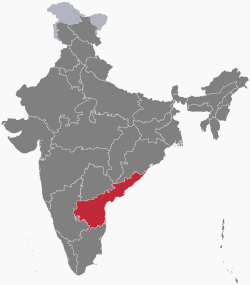


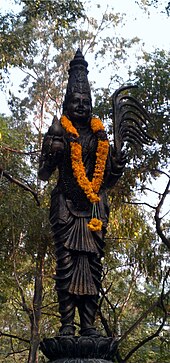
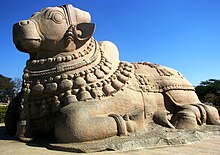






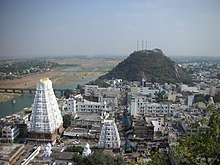





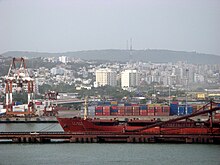



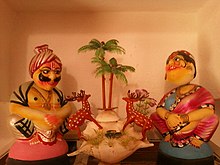


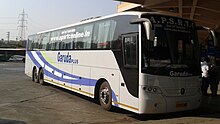

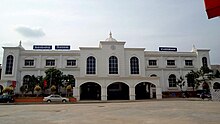




No comments:
Post a Comment